Michael Donald Keen Dauncey had a keen ambition to become a soldier from a young age, though began his civilian career training as a Chartered Accountant.
At the outbreak of war he abandoned his white collar career, and was commissioned as a Second Lieutenant in the Cheshire Regiment in 1941. At the time the Cheshire Regiment was a Medium Machine Gun Regiment, and was also the parent Regiment of two other notable Airborne officers, Maj 'Babe' Cooper (GPR) and then-Maj Napier Crookenden (Para).
Lieutenant Dauncey transferred from the Cheshire Regiment and underwent flying training with the Glider Pilot Regiment. His transition from Machine Gunner to Pilot went relatively smoothly, although not without incident. During Mike’s second solo on the Hotspur Glider, during the flight the flap lever came off in his hand and Mike was forced to make a ‘heavy landing’.
In February 1944 Mike was posted as a Second Pilot to 9 Flight GPR who were then located at RAF Leicester East. Mike moved with 9 Flight to RAF Fairford where the Flight became part of the newly formed G Squadron under the command of Major Bob Croot. The majority of G Squadron deployed on Operation Market Garden.
Mike flew as second pilot in a Horsa to S/Sgt Alan Murdoch as part of the First Lift on 17 September 1944, carrying a load comprised of personnel from 1st Airlanding Regiment RA. , Mike recorded being heartened by the presence of an MM and an MC among his passengers. SSgt Murdoch carried out a good landing close to the Mental Hospital in Wolfheze.
Along with the bulk of G Squadron the two pilots were deployed in defensive positions, offering close protection to the Light Gun Batteries. By Wednesday 20 September Mike was deployed in a mixed force of Glider Pilots, South Staffs and Parachute Regiment survivors in a defensive screen in front of the gun line in Oosterbeek. The tempo of the fighting increased dramatically from 21 September. The collapse of the 2nd Parachute perimeter at Arnhem Bridge allowed the Germans to concentrate their assault on Oosterbeek.
Over the next few days Mike Dauncey led his composite force with great bravery against Self-Propelled Guns, Tanks and Infantry. On 23 September Mike led a small group of paratroopers on a raid against a German occupied building. The small force raised British morale when they returned across no mans land with a large group of German POWs.
The next day, 24 September Mike’s luck began to run out. He and his men had been plagued by a persistent German sniper; Mike went to an upstairs window in an attempt to locate the sniper. Unfortunately the German snipers reactions were quicker and he loosed off a shot at Mike who was framed in the window. The bullet struck a stove pipe next to his head and a splinter of metal was embedded in his eye. In spite of the efforts of a helpful Para using two matchsticks in place of tweezers the splinter could not be extracted, leaving Mike blinded in one eye.
Despite his injury, he continued to fight on. On Monday 25 September Mike was involved in repelling a German armoured attack along Weverstraat. He and another Airborne soldier set out with a Gammon bomb to knock out an advancing German Panzer. Mike was by now only armed with a captured German Luger pistol. He and another Paratrooper armed with a Bren gun were then engaged in a fire fight with German infantry. Mike was hit in the thigh by a round and then later a grenade exploded close to his head. Now too badly wounded to fight on Mike was carried to Kate Ter Horst’s house for medical treatment.He was incapacitated and unfit to be evacuated during Operation Berlin - he was taken prisoner at the end of the battle.
After a few days in Apeldoorn the German Army transported Mike with five other Airborne soldiers to the Dutch eye hospital in Utrecht. After excellent treatment from the Dutch staff he was moved to the German St Antonious Prison Hospital. Aware that he was about to be transferred to Germany Mike escaped with Major Gordon Cunningham of 5th Battalion, The Black Watch. The two escaped in classic style using knotted bed sheets. Assisted by the Dutch Resistance the two men remained hidden from the Germans until 4 February 1945.
The two escapers cycled from Utrecht disguised as doctors via Culembourg and Buren to the River Waal. They then crossed the river in a leaking rowing boat and crossed into Allied territory. After the war Mike’s eye injury prevented him from returning to flying duties. Mike was disappointed that he would never be able to complete the training and become a First Pilot. On hearing of this Lieutenant General ‘Boy’ Browning sent Mike a set of his own wings – making him a First Pilot. Mike was married to Marjorie in September 1945.
Shortly after returning to duty at Fargo Camp Mike was astonished to see his name listed on the honours and awards list in Flight Magazine. Lieutenant Mike Dauncey had initially been recommended for the Victoria Cross, he had however been awarded the Distinguished Service Order (DSO) for his bravery during the Arnhem Battle (see citation).
Mike Dauncey was then appointed Military Assistant to Lieutenant General K.N. Crawford in Greece (1946-7). He remained in the Army, initially with the Royal Welch Fusiliers, before returning to the Cheshire Regiment where he progressed through the ranks. Prior to his retirement as an Honorary Brigadier in 1976, Mike was the British Military Attaché in Madrid. During the 1980s and later 1990s Mike served as the Regimental Colonel of the Cheshire Regiment and was the Deputy Lieutenant for Gloucestershire.
Brigadier Mike Dauncey DSO, DL maintains strong links with Airborne Forces and the Army Air Corps and veterans community, supporting numerous causes including the Memorial at Double Hills
Profile compiled with assistance from Mike Peters
Read More
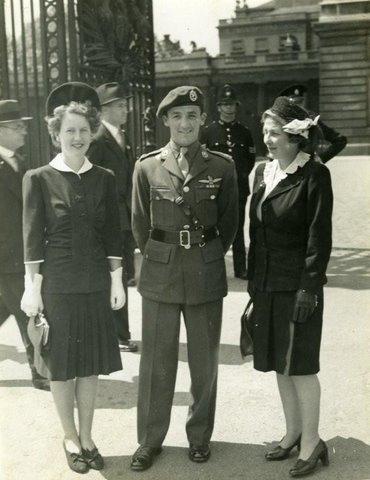
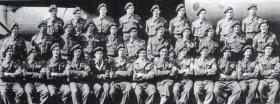
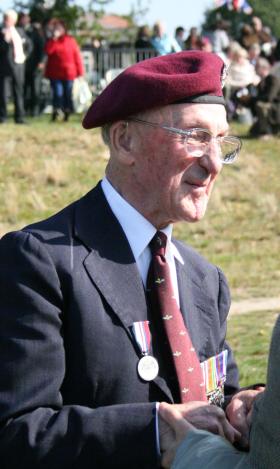
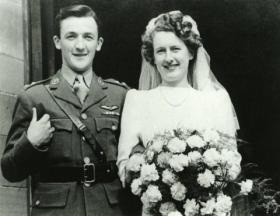
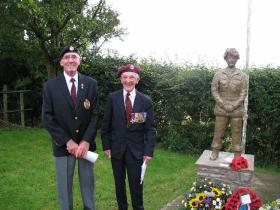
Latest Comments
There are currently no comments for this content.
Add Comment
In order to add comments you must be registered with ParaData.
If you are currently a ParaData member please login.
If you are not currently a ParaData member but wish to get involved please register.